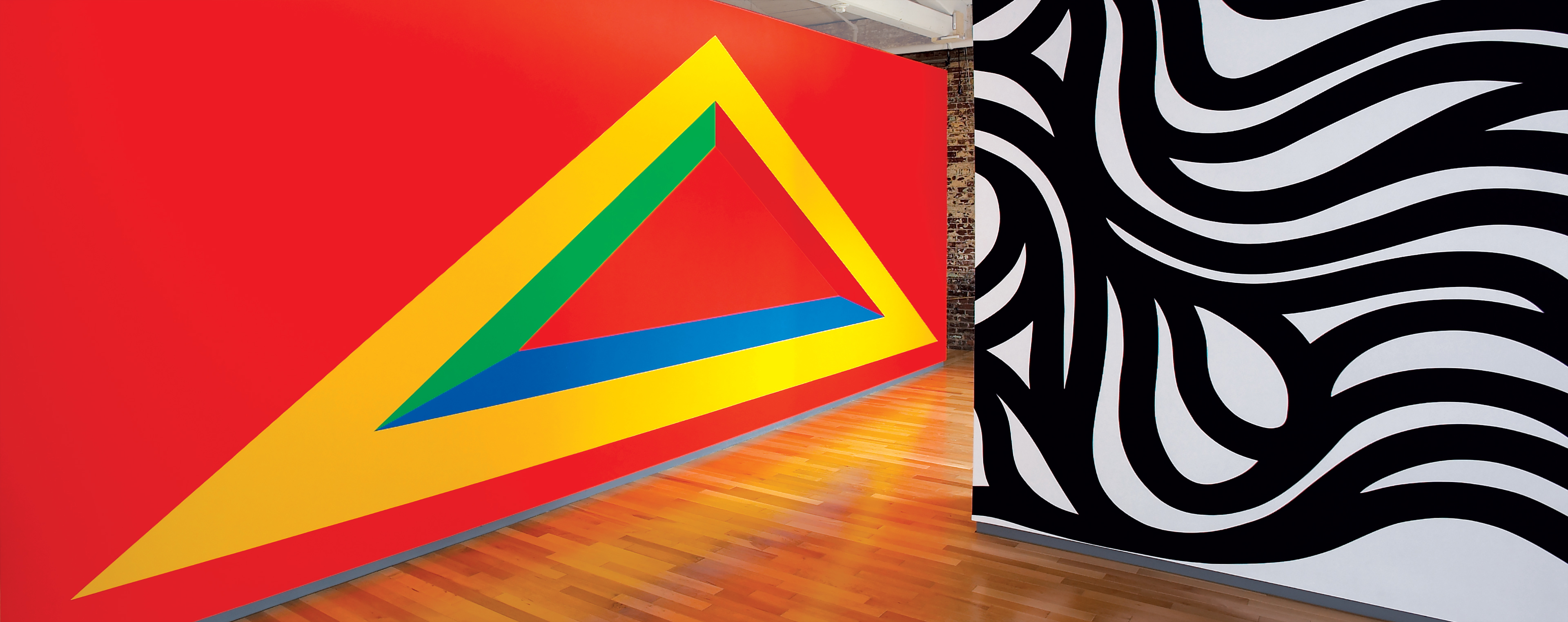Sol LeWitt
- Sol LeWitt
Isometric form.
December 2001
Acrylic paint
Courtesy of the Estate of Sol LeWitt
First Installation
Fundación PROA, Buenos Aires
First Drawn By
Ignacio Amespil, Cecilia de Arriba, Veronica del Toro, Tomas Fraccia, Francisco Gomez, Bruno Grisanti, Favio Guadagna, Walter Mantegazza, Erik Martinut, Barbara Mendez de Leo, Lola Quiroz, Anthony Sansotta, Santiago Solda
MASS MoCA Building 7
Third Floor
In the first few years of the twenty-first century Sol LeWitt created many acrylic wall drawings which feature geometric configurations composed of brilliantly colored bars. Several of these works were first displayed in a 2001 exhibit at Fundación PROA in Buenos Aires. Shown together, the primary and secondary colored bars seem to jut out from the contrasting backgrounds, creating a sense of space and atmosphere.
The three-dimensionality of the bars in Wall Drawing 1005 and its contemporaries represents a continuation of the ideas that the artist explored in his ink isometric form wall drawings created between the 1980s and the early 1990s. Shapes drawn using isometric projection possess volume, but exist in space that does not recede. Unlike the muted jewel-toned ink wash palette, the bright acrylic hues of the later works make the forms appear to pop out from their backgrounds, creating a visual tension between the flatness of the wall and the three-dimensionality of the form.
Backstory
Before the draftsmen execute a wall drawing, they must prepare the surface of the wall. Different types of drawings require different wall textures. For example, it is preferable for crayon drawing walls to have an orange peel-like surface so that the crayon sticks to the wall in a specific way. Painted wall drawings, such as Wall Drawing 1005, on the other hand, must be executed on a perfectly smooth wall. To create this, the draftsmen paint several coats of primer and then a white top coat, all of which they sand down until there are no remaining brushstrokes or irregularities.


